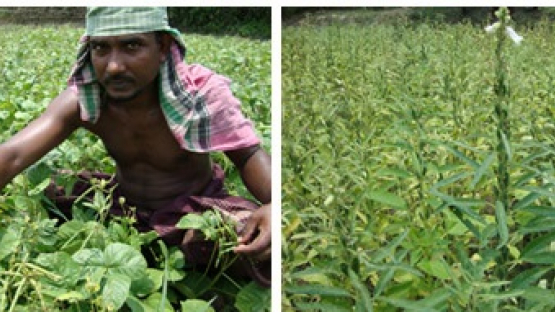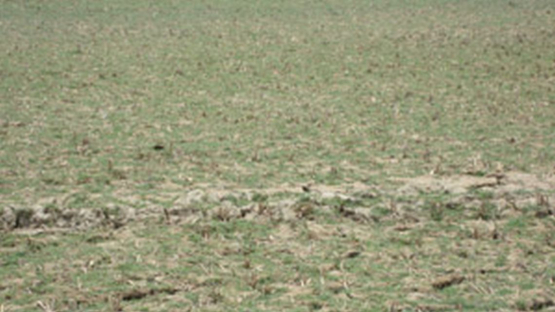Using the integrated soil-water-plant approach that takes into account both soil water measurements and the carbon isotope discrimination technique, two short duration and salt tolerant/escape varieties of each of mung bean mustard, sesame, chickpea, groundnuts and wheat have been identified and are currently grown by 'champion farmers' at the two pilot coastal sites (Noakhali and Satkhira) after the harvest of the rainy season (aman) rice. Farmers who used to leave the coastal lands to urban centres for job and income security can now boast of new income generation that has helped to improve their livelihood (Figures 2 a and b). There is a need for this integrated package to be extended to other coastal salt affected areas in Bangladesh.

If you would like to learn more about the IAEA’s work, sign up for our weekly updates containing our most important news, multimedia and more.
Turning Adversity into Opportunity: Farmers Reaping the Benefits from Year-Round Production of Income Generating Crops in Coastal Saline Lands of Bangladesh
Rice is the major crop grown in the coastal areas of Bangladesh. Soil and water salinity is a major threat to crop productivity in these coastal areas.
Soil salinization in the coastal areas is mainly due to sea water that moves inland along the tidal rivers, spills over to the land and salinizes soil and the shallow ground water. Approximately 90% of the arable lands in the coastal areas have been salinized through this process resulting in extended fallow period of up to seven months after the rice harvest (Figure 1). To improve farmers' livelihoods it is therefore important to reduce this long fallow period and to have another crop grown and harvested to improve food security.
Soil salinity increases from 1.4 deci Semens per meter (dSm-1, a measure of the severity of salt concentration in soils, the higher the value the more hazardous it can cause to crops) after the harvest of the rainy season rice in August to 12.9 dSm-1 in February. In addition, the salinity of the river water used for irrigation increases from 1.9 dSm-1 in August to 16.5 dSm-1 in February. The main challenge is to develop appropriate water management practices aimed at the reclamation of these coastal saline soils to ensure year round crop productivity for improved food security and livelihoods of the people.
Through IAEA TC Project "Increasing Agricultural Production in the Coastal Area through improved Crop, Water and Soil Management" and in collaboration with the Bangladesh Institute of Nuclear Agriculture, a new integrated technology to estimate soil water content for the timely and accurate application of brackish water and to improve plants' water use in the coastal area was tested. The soil moisture neutron probe proved to be efficient to estimate the soil water content in saline soils compared to the time domain reflectometer at two pilot sites (Satkhira and Noakhali). The carbon isotope discrimination (the isotope ratio of 13C to 12C in plant tissue), a surrogate of water use efficiency and a function of plant stomatal opening, was successfully used to assess the ability of different crops and crop genotypes tolerance to different range of soil and water salinity during the fallow period.

Figure 2. Turning adversity into opportunity: (a) A farmer harvesting mung bean (b) High production of salt tolerant sesame from the saline land.

